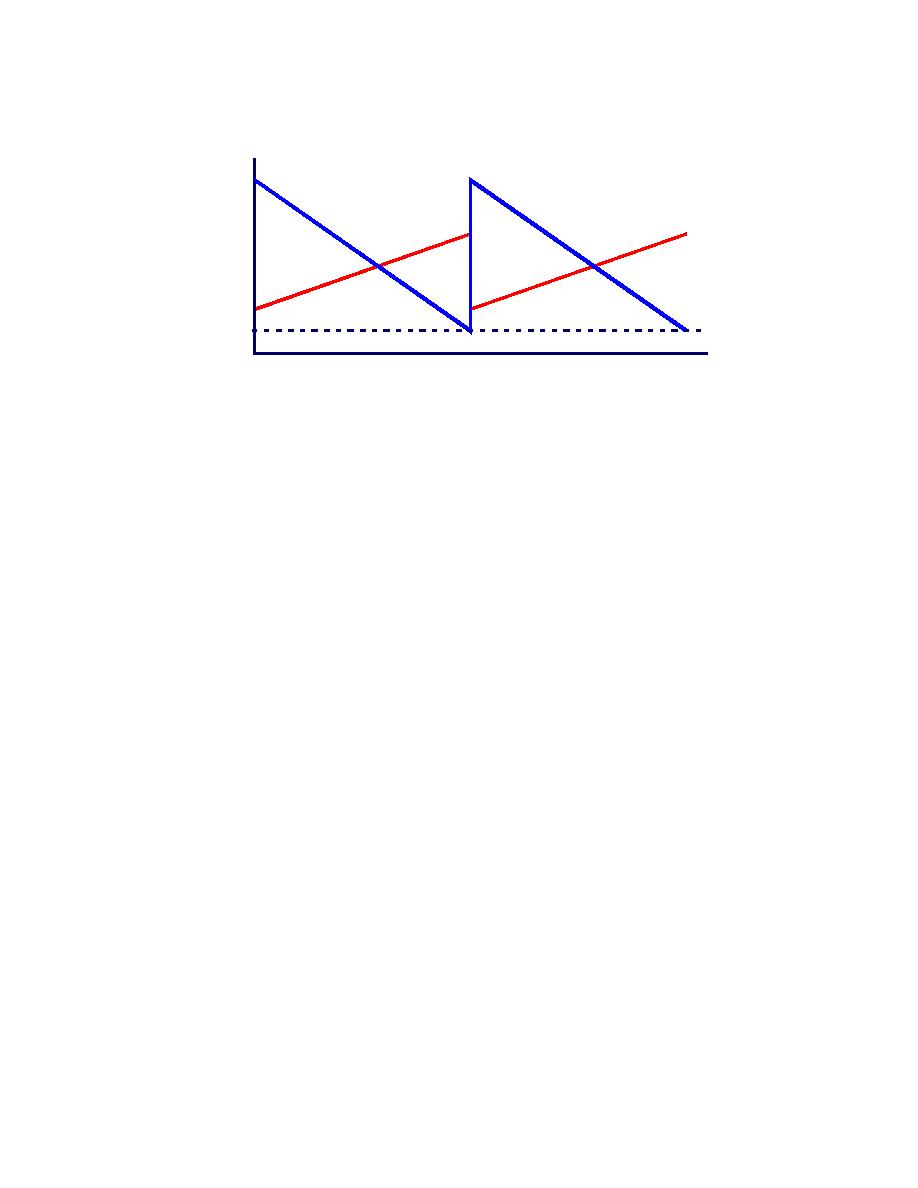
UFC 3 -520-01
June 10, 2002
Figure F -2. Lumen Maintenance
Light
Level
Decline
Energy
Usage
Minimum
Acceptable
Light Level
New
3 Years
6 years
Group Relamp
and Cleaning
F-12.4.6 Because dimming is more costly than switching, justification is required.
Dimming must be based on room use or program. Justification can be based on a life
cycle cost advantage.
F-12.5
Multip le Lighting Level Controls . Include multiple lighting level control if
required by the tasks performed in the work area. An example of areas in which lighting
levels can vary are dining facilities in which light levels required for cleanup are higher
tha n that required for dining. Aircraft shelters also can require varying ambient light
levels depending on the tasks performed.
F-12.6
Time of Day Controls .
F-12.6.1 Time of day controls, or time scheduling systems, can be effective at reducing
energy usage only if the following two conditions are met:
The occupancy patterns in the space are relatively predictable.
There are some hours when the lights can be off (or at low level) without adversely
affecting productivity, safety, or security.
F-12.6.2 In spaces not employing motion sensors, automatic time controls with
programmable start and stop times can be provided. Programmable time controls
should be electronic with different schedules for each work day, programmable
holidays, and astronomical features. Automatic adjustment for daylight savings time
should be included. Provide battery backup to ensure that the programming is not lost
in the event of a power outage. Provide manual override switches at readily accessible
locations.
F-12.6.3 Time of day controls are most effectively implemented as part of an energy
management and control system. If a separate system is used, ensure that the
selected system is relatively easy to reprogram and provide adequate training to
personnel responsible for maintaining the system.
F-22


 Previous Page
Previous Page
